Tap picture to advance the slideshow.
What does March 14 mean to you? If you’re physicist Larry Shaw and fortunate enough to have a day job at San Francisco’s Exploratorium, it’s a great excuse for a very big party. And if you’re mathematically inclined, you may recognize, as Shaw did decades ago, a correspondence between the date and 3.14, the iconic number otherwise known as π, or pi.
Considered both “irrational” (because its decimal expansion is infinite and nonrepeating) and “transcendental” (because it cannot be produced by a finite series of calculations), pi has inspired celebrations in a similar spirit since 1988, when Shaw hatched the Exploratorium’s first Pi Day. In more recent years, the “holiday” has gone global and in 2009 received official recognition from Congress. Being a bit irrational and transcendental ourselves, we couldn’t resist investigating the backstory of this tradition and, of course, its links to the homophone pie. Answers came from Shaw, a.k.a. the Prince of Pi, now retired; his fellow physicist and Pi Day coconspirator Ron Hipschman; and Melissa Alexander, director of public programs at the Exploratorium.
Gourmet Live: How would you define pi for food lovers?
Ron Hipschman: Pi is defined by the ratio of a circle’s circumference to its diameter. In other words, if you stretch a string around a can of soup, the string will stretch across the diameter of the can a little more than 3 times (3.14159…, or pi, times, to be precise).
GL: Pi dates back some 4,000 years, yet it was not until 1988 that Pi Day was created. What inspired this?
Larry Shaw: The original impulse came from an evening-long conversation in 1983, with a brilliant musician/mathematician friend, Jim Horton. We thought that the mysterious irrationality of pi should be celebrated by some place, to experience and contemplate this multidimensional mystery. A “shrine” to pi! This became a real project with members of the staff of the Exploratorium after the first all-staff retreat in 1988. The Brass Pi Shrine is the outcome, and we celebrated the first Pi Day on March 14, 1988.
GL:What form does the Pi Shrine take?
Melissa Alexander: The Pi Shrine—a round, small bronze plaque embedded in the floor of the Exploratorium’s mezzanine level—appears rather prosaic at first glance. Most of the time it goes unnoticed by our visitors, who walk right over it.
Nonetheless, it is key to a winsome and rather wonderfully inclusive and absurd ritual that is inherent to our museum community—which includes, by the way, both ourselves and our visitors who help perform it.


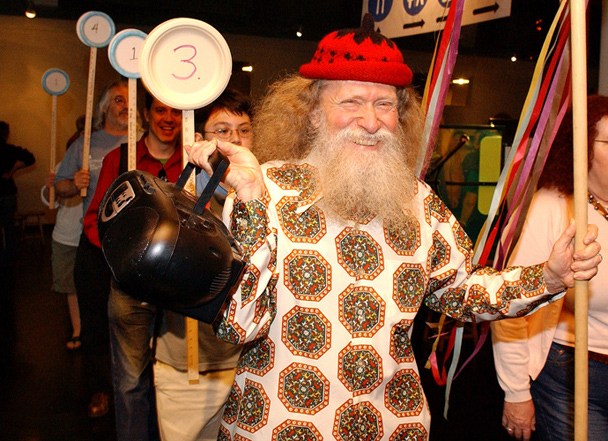
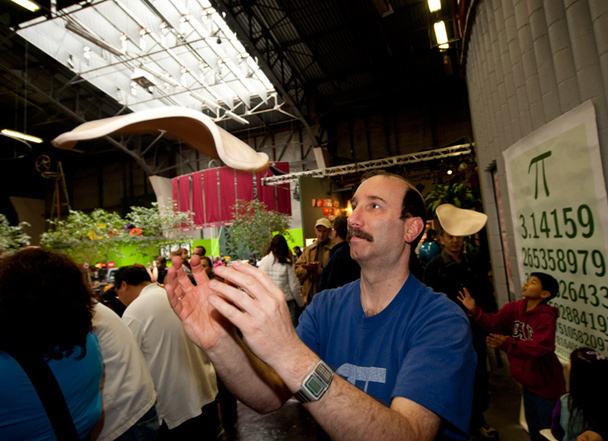
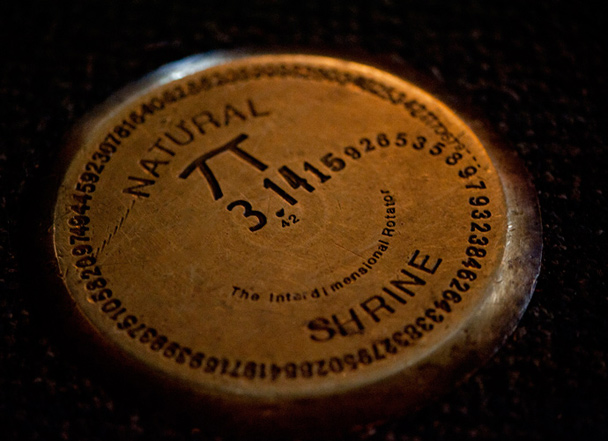
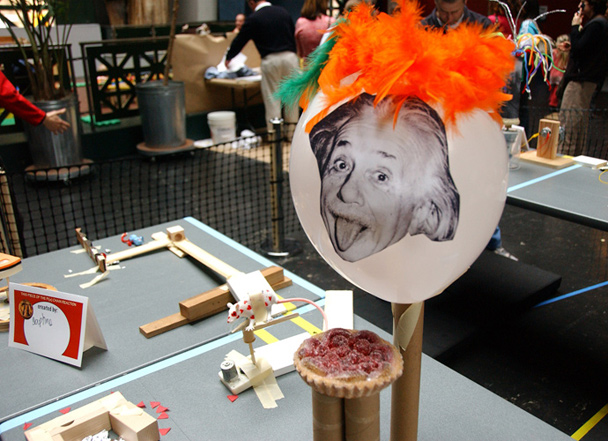
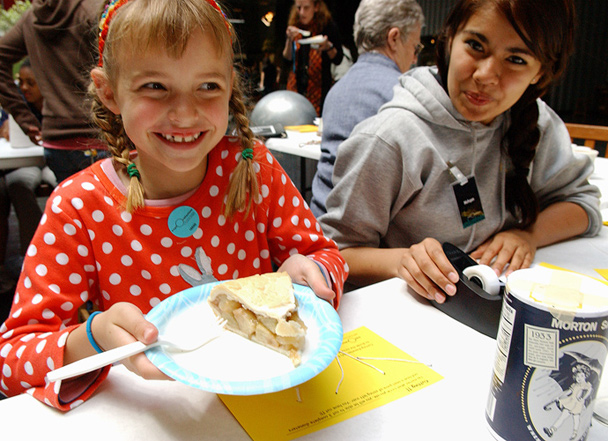
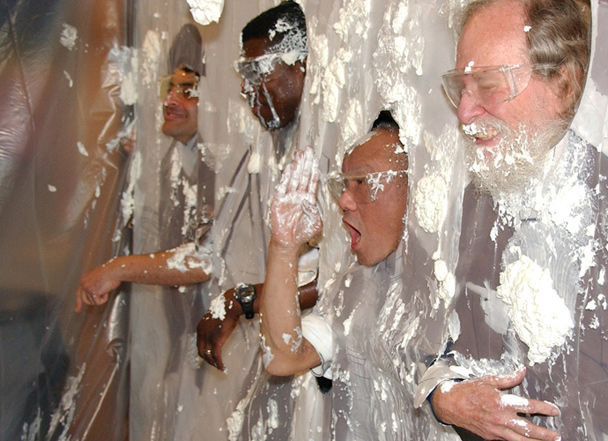
 Pinterest
Pinterest


